by Laura Stovel
In the classrooms and halls of Columbia Park Elementary School bees, butterflies, worms, fish, chickens and snails have captured students’ hearts and excited their curiosity. According to principal Ariel McDowell, this approach to learning encourages students to ask deep questions and find their own answers – or more questions – rather than just memorize facts.
Mrs. Pattinson’s grade three-four class has a bee hive, glassed in on two sides so students can view the bees. The hive has a pipe that leads outside, letting the bees come and go as they please to do their important job of pollinating plants.
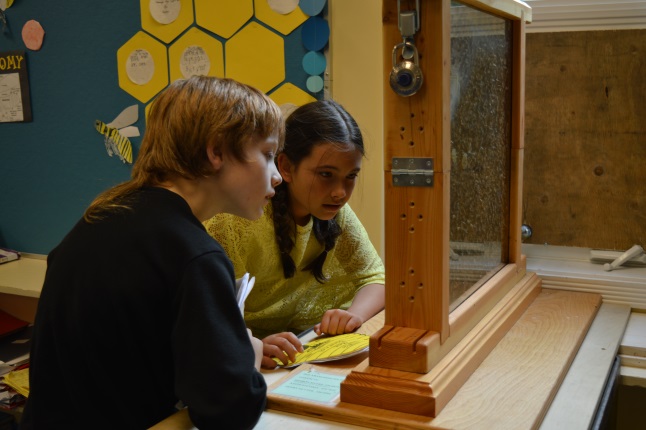
Zoe Smith and Jordan Schoonover peer into a glassed-in bee hive, looking for a queen. They explain that you can tell a queen bee because of her size and that the queen is chosen when the other bees give her royal jelly.
“It’s hard to find her because they are not circling around her any more,” Smith explained.
“If you listen very carefully you will hear the bees. The noise comes from their wings because they’re going very fast,” Schoonover added.
The class had the opportunity to see the bees swarm, taking 60% of the hive with them. The students kept bee journals, recording their observations, and the bee keeper visited their class and helped them with their hive. The students also made bee art with bee wax as part of an Art Starts grant. Their work is currently on display at the Revelstoke Visual Arts Centre.
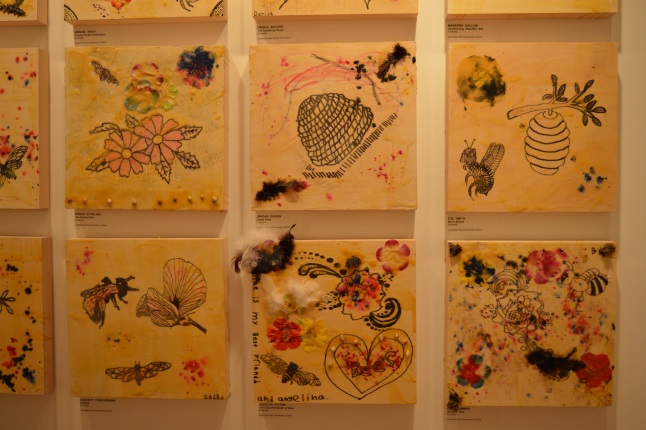
“It’s funny looking back at it,” said Principal Ariel McDowell. “The direction we went in was a bit accidental. We wanted to reach kids in authentic ways and make their learning interesting for them, seeing them get excited when they learn about something that they can get their hands into, getting them outside and connecting to the place where they live.”
“We have teachers on staff who are passionate about being outside with kids. They are also very interested in being environmentally conscious and instilling that in their students, not by telling them facts but by doing things alongside them,” McDowell said.
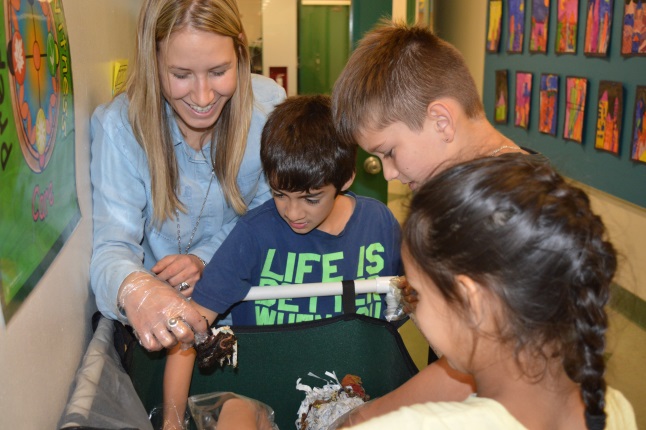
The projects this year have grown from previous efforts. For example, for the past several years one teacher collected all the school’s compost and took it home to her composter. This year the school got a vermicomposter and little red wigglers (worms) are now doing the composting work right in the hallway. The children in Stephanie Noel’s grade two-three class love watching the worms. The worm castings will be ready to use in the garden nine months after they started the project in April.
The school began gardens for each class at the front of the school last year. However, the students found that although their beans flowered beautifully, they weren’t pollinated so the beans never grew. This prompted the idea of bringing in bees to help pollinate the garden so this year’s gardens benefit from the bees.
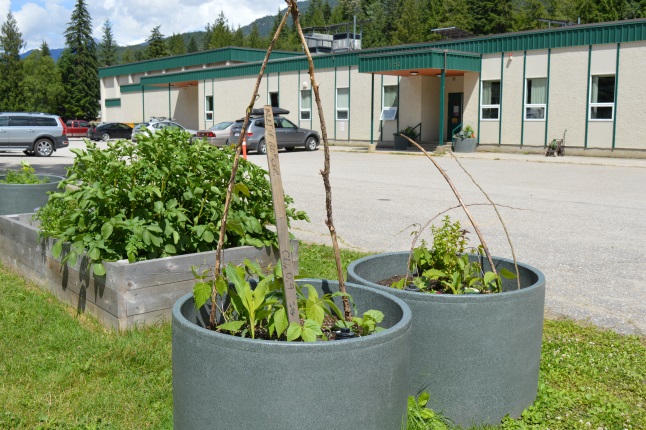
When the vermicomposter was installed, the school bought extra worm castings and each class experimented with using the castings on half their garden allotment and leaving the rest bare. In this way the students are learning through experimentation.
One class raised salmon hatchlings. Once the fish were big enough they were driven to the Kingfisher Interpretive Centre and salmon hatchery near Enderby where they were released. Although the classes have been raising hatchlings for many years, “now we are discussing why we have to travel so far to release our salmon,” McDowell said. “The kids see that at Kingfisher the fish can access the ocean whereas here they can’t. Our grade two students go to the Fish Festival each year at Bridge Creek but for the last couple of years they’ve hardly seen any fish. This raises questions like: Why is our water system not as healthy? Why are our kokanee not coming back in the same numbers? And why do we have to travel so far to release our salmon in a place that we know they will survive and be healthy?”
Two classes experienced hatching chicks, McDowell said. After 21 days they saw the chickens hatch out of their eggs. “Some make it and some don’t and there’s learning in that.
The students know from the get-go that these birds are going to be dinner for families because we want to be purposeful about learning where their food comes from. One of the teachers took the birds home and they will raise them for the summer and put them in the freezer for the winter.”
“The questions that arise are: Where does my food come from? Is that healthy to put in my body? And is that sustainable? Is there a sustainable way to keep myself healthy?”
These discussions are complemented by the Local Food Initiative’s Farm-to-Table program where grade four students are taken to the farmer’s market and grocery store to learn more about the food they eat.
Other school projects included raising butterflies, ordered by mail from Vernon Teach and Learn. “The students watched as they developed from caterpillars into pupa and then they released them within a day or so from them hatching,” McDowell said. “Those classes also learn that butterflies are important pollinators.”
In the kindergarten class there are aquariums on the tables with snails that the children caught themselves. The children created a suitable environment for the snails, with grass, rocks, sand and water and they watched the snails which tended to climb to the top of the aquarium.
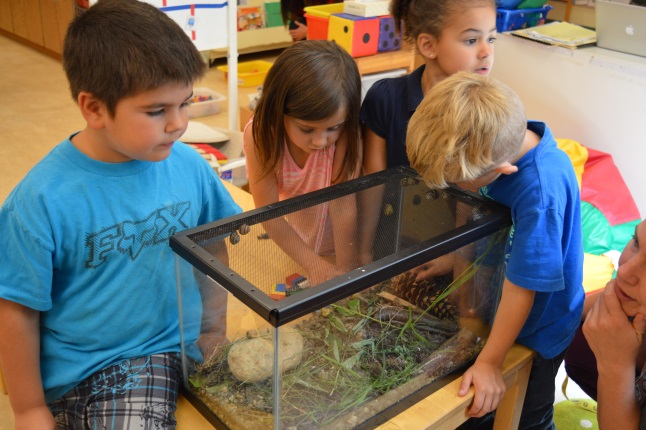
The other kindergarten class was outside blowing bubbles from dish soap on water. This taught them about iridescence, McDowell said.
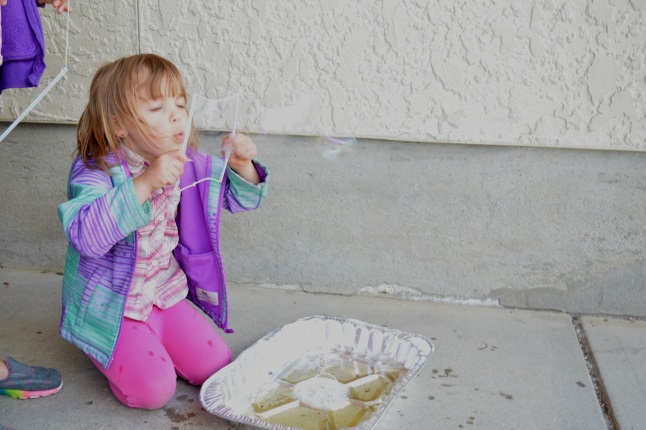
Grade four student Austin Keetley was keen to show a clay model of nuclear power that he had made himself. The model shows how nuclear power would be made. “It would start at the nucleus of an atom which would be split or fused,” he whipped off matter-of-factly. “In my example it is fused. It would be fused in the power cord and sent through the cord to the processing factory where they would add electrolytes and all kind of stuff that would make it raw and useful. And then they pump out the nuclear waste or reuse it.”
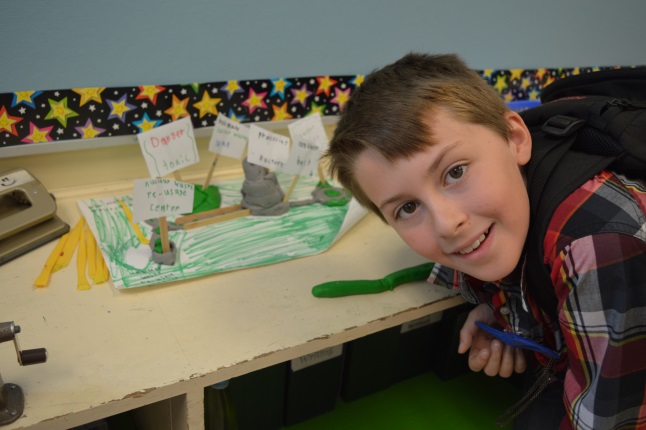
Asked whether nuclear power is a good thing, he replied, “Well maybe if they put a little research into it the nuclear waste could be reusable quicker. The nuclear waste is the only down side. It’s clean energy. It doesn’t produce smoke, only steam.”
This approach to learning recognizes the interconnections between subjects. “It’s not just science. It’s nutrition. It’s math in a lot of ways. It’s language arts. It’s so integrated,” McDowell said.
She also noted that the other schools are incorporating gardens into their programs. Begbie View Elementary School and the high school both have gardens and Arrow Heights Elementary had an intergenerational garden project with seniors that had the students visiting the gardens at the Cottages.
McDowell said that this learning approach is consistent with the new BC curriculum. “The BC curriculum itself is really turning to the importance of questions and turning away from rote learning. It’s really about deep questions and what investigation of those questions leads to, which is really about more questions but also a shared responsibility for learning.”



